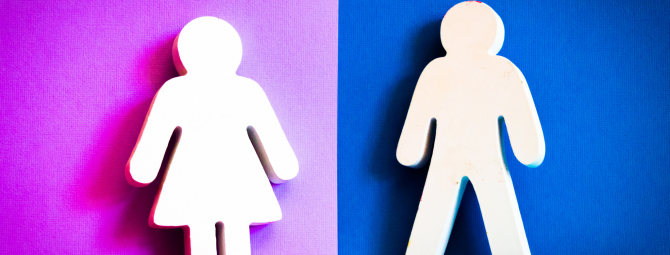 Gender dysphoria is when a person feels distressed because their gender identity differs from the sex they were given at birth.
Gender dysphoria is when a person feels distressed because their gender identity differs from the sex they were given at birth.
Not all gender diverse children have gender dysphoria. Some children are comfortable identifying as a gender that’s different from what they were assigned at birth. And being gender diverse or experimenting with gender expression isn’t a problem unless your child seems upset or distressed about their gender.
But some children do experience gender dysphoria, especially if they experience bullying, stigma or discrimination at school or other places.
Young children: signs of gender dysphoria
If you think your young child has gender dysphoria, there are some signs you can look out for.
Your child might:
- insist they’re a different gender – for example, they might say ‘I’m a girl, not a boy’
- get upset or angry if they’re called a boy or girl, or brother or sister, or anything else that’s gender specific
- show signs of anxiety like not doing as well as usual at school, having tantrums, or not wanting to take part in usual activities. These signs might be more obvious in settings that are gendered, like school or sports activities
- go to the toilet in a way that’s associated with a different gender – for example, your gender-diverse child who was assigned as female at birth might stand up to urinate
- ask you to call them by a different name and use a different pronoun like he, she or they
- ask questions about their gender – for example, ‘Can I be a daddy instead of a mummy when I grow up?’
- not like the physical signs of their sex or want those that match a different gender – for example, your child might say, ‘Can the doctor take my penis off?’ or ‘I don’t want to grow breasts when I grow up’.
Teenagers: signs of gender dysphoria
If you think your teenage child has gender dysphoria, there are some signs you can look out for.
Your child might:
- feel strongly that their gender identity differs from the sex they were given at birth or tell you that they feel unsure about their gender
- ask you to call them by a different name and use a different pronoun like he, she or they
- want to get rid of the physical signs of their sex or have those of a different sex – for example, your child might say they want to use medication to become more masculine or feminine, or they might start wearing clothes that hide their body
- show signs of anxiety, especially in social situations
- show signs of depression – for example, not wanting to take part in activities, particularly activities that are gendered, like sport
- self harm – for example, by scratching, cutting or biting themselves.
References
Giordano, S. (2013).Children with gender identity disorder: A clinical, ethical, and legal analysis. Oxford, UK: Routledge.
Murchison, G. (2016). Supporting and caring for transgender children. Washington, US: Human Rights Campaign. Retrieved 22 May 2018 from https://assets2.hrc.org/files/documents/SupportingCaringforTransChildren.pdf.
Telfer, M.M., Tollit, M.A., Pace, C.C., & Pang, K.C. (2018). Australian standards of care and treatment guidelines for trans and gender diverse children and adolescents. Melbourne: The Royal Children’s Hospital. Retrieved 22 May 2018 from https://www.rch.org.au/uploadedFiles/Main/Content/adolescent-medicine/australian-standards-of-care-and-treatment-guidelines-for-trans-and-gender-diverse-children-and-adolescents.pdf
Books for you and your child which offer support and understanding for gender dysphoria in children and youth.
Resources
https://gendercreativekids.ca/providers/gender-independent-groups-toronto/
https://www.transparentcanada.ca/?file=welcome
https://www.genderspectrum.org/
https://www.sickkids.ca/en/care-services/clinical-departments/adolescent-medicine/
http://www.griffincentre.org/reachout.php


Add a comment to: Gender Dysphoria in Children and Youth